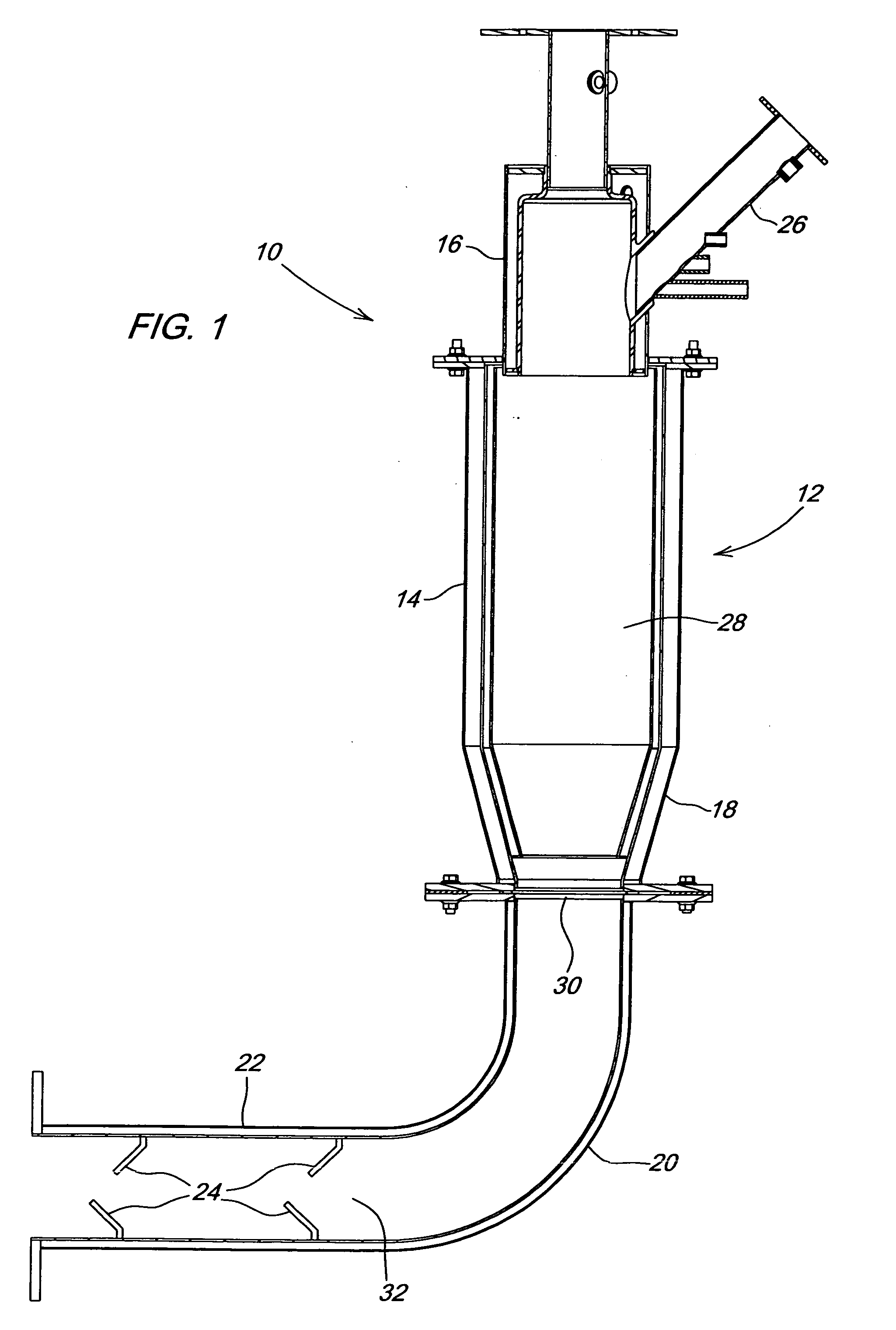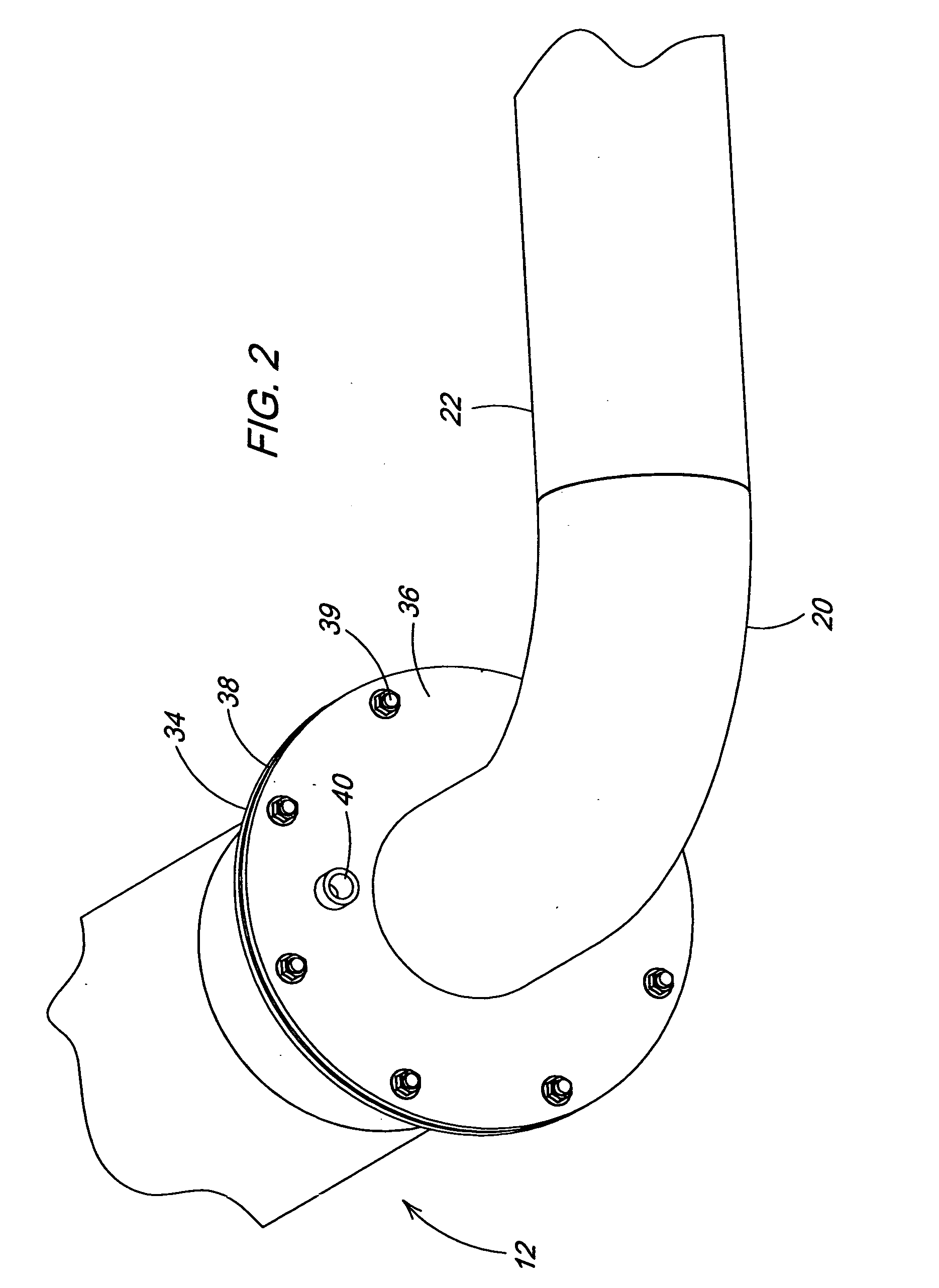Combustion chamber design with water injection for direct-fired steam generator and for being cooled by the water
a combustion chamber and steam generator technology, applied in the direction of steam generation using hot heat carriers, machines/engines, lighting and heating apparatus, etc., can solve the problems of insufficient cooling of the bottom wall, which contains a centrally located exit outlet, and the solution is somewhat costly
- Summary
- Abstract
- Description
- Claims
- Application Information
AI Technical Summary
Benefits of technology
Problems solved by technology
Method used
Image
Examples
Embodiment Construction
[0022] Referring now to FIG. 1, there is shown a portion of a direct-fired steam generator 10 including a steam generator body 12 having a relatively long cylindrical inlet section 14 to which a cylindrical burner head 16 is coupled, and having a relatively short conical outlet section 18. An elbow 20 is coupled between the outlet section 18 of the body 12 and a tubular static mixer 22 containing mixing fins or baffles 24 having a purpose explained in more detail below.
[0023] The burner head 16 includes a pilot burner tube 26 located such that it communicates with a lower region of the burner head 16. An igniter (not shown) is mounted so as to terminate within a lower region of the pilot burner tube 26. The igniter may be a spark plug or other type of sparking device, which operates to selectively ignite a fuel / air mixture selectively metered into an upper end of the pilot burner tube 26. When this mixture is ignited, it in turn acts to ignite a fuel / air mixture metered into an upp...
PUM
 Login to View More
Login to View More Abstract
Description
Claims
Application Information
 Login to View More
Login to View More - R&D
- Intellectual Property
- Life Sciences
- Materials
- Tech Scout
- Unparalleled Data Quality
- Higher Quality Content
- 60% Fewer Hallucinations
Browse by: Latest US Patents, China's latest patents, Technical Efficacy Thesaurus, Application Domain, Technology Topic, Popular Technical Reports.
© 2025 PatSnap. All rights reserved.Legal|Privacy policy|Modern Slavery Act Transparency Statement|Sitemap|About US| Contact US: help@patsnap.com



